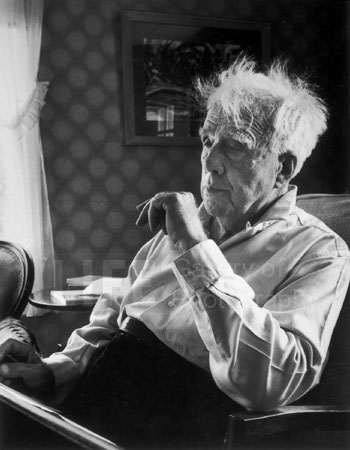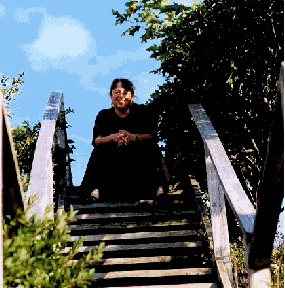The first time I went to the Vineyard, it was my honeymoon — to my first husband and the year was 1965. I didn’t know anything about the Vineyard. I hadn’t even known it was there, but we were looking for somewhere interesting to go that we could afford. It’s funny to realize that in 1965, Martha’s Vineyard was a relatively inexpensive place to vacation. Now, it will cost you your first-born child and all your gold.
Jeff and I stayed at the Menemsha Inn, which is on the west side of the island. It turned out that this was also the place where Alfred Eisenstaedt spent his summer vacations. He had his own cabin and his books of photography were everywhere. I had just started to take pictures. I had my first camera loaded with black and white film. No electronic meter. No electronic anything. Manually loaded film and a hand-held light meter.
I was using my first camera, a Praktica with a brilliant Zeiss 50mm lens. It was a terrific lens. Otherwise, the camera was basic. No electronics or automatic anything. A hand-cranked film advance on a completely bare-bones camera. I had brought half a dozen rolls of black and white film with me. I used them all.
Eisenstadt was not at the Inn while we were there, but his books became my guide to photography. I went every place on the island where he had taken pictures and I copied each. Literally, I figured out exactly where he had stood — or crouched — to get each shot. To say it was illuminating doesn’t cover it. By the time I was through with that week’s vacation, I could take pictures.
The moral of the story? If you are going to copy, copy from the best.
In the summer of 1991, channel 7 let Garry do a feature about Alfred Eisenstaedt — world-famous photographer — and Lois Maillou Jones, world-famous painter. Both of them lived on Martha’s Vineyard. Both had recently received Presidential Medals of Honor from President Bush (the first).
When the shoot was over, we got to be friends with both artists. Eisenstaedt was 93. Lois Maillou Jones was 86. It was an incredible honor for us. For me, getting to really know a man I’d been admiring for decades was beyond thrilling.
I had been an admirer of Eisenstaedt’s work as long since before I began taking pictures.
It was ideal for a beginner. I had to take a light reading with a handheld meter. I had to focus the lens, set the shutter speed and f-stop. Choose the film speed — though you only had to set film speed once when you loaded the camera.
There weren’t a lot of settings to learn, but they were and remain the essentials of photography. My 50 mm lens was a prime. No zoom. It was a good piece of glass and moderately fast at f2.8.
If I wanted a close up, I could move in. Wide shot? Run the other way. I learned photography in a way that those who’ve only used digital cameras with zoom lenses can’t imagine. Most of today’s photographers have never so much as held a camera that doesn’t include auto-focus, much less taken a manual light reading. And if you forgot your meter, you could use the suggested setting on the little paper enclosure that came with Kodak film. After a while, you could set your camera pretty much by eyeballing the light and you’d get it right 90% of the time. We don’t actually need all the gadgets we use.
Maybe it doesn’t matter. Maybe it does.
The camera was a gift from a friend who had bought a new camera. Armed with the camera and determination, I followed Eisenstaedt’s path. I discovered where he’d taken each picture, figured out how he’d gotten the perspective. I duplicated his shots down to the clump of grass behind which he’d crouched to create a foreground.

Photo by Alfred Eisenstadt
My first roll of film was brilliant — except the photographs were copies of Alfred Eisenstaedt’s. He taught me photography by giving me foot prints to follow. By the time I was done with those first rolls of film, I had learned the fundamentals. I’m still learning the rest and I’ll probably never be finished.
When I actually met Alfred Eisenstaedt, it was the most exciting moment of my life.
As we got to know Eisie better, I asked him to autograph his books for me. He didn’t merely autograph them. He went through each book, picture by picture.
He was in his nineties and had forgotten many things, but remembered every picture he’d taken, including the film, camera, lens, F-stop, and most important, what he was thinking as he shot. He could remember exactly what it was about the image that grabbed his attention.
For example, the picture of the sailor kissing the nurse in Times Square on VJ Day, he said he was walking around Times Square with his Nikon. When he spotted the dark of the sailor’s uniform against the white of the nurse’s dress, he knew it was what he wanted and shot. Light, contrast, composition.
We spent time with him each summer until he passed in 1995. We were honored to be among those invited to the funeral. Although we were sad Eisie was gone, we found things to laugh about. Knowing him was special and some memories are worth a chuckle.
I don’t think Eisie would have minded.
Categories: #Photography, Anecdote, Cameras, Personal








 LEARNING PHOTOGRAPHY FROM ALFRED EISENSTAEDT
LEARNING PHOTOGRAPHY FROM ALFRED EISENSTAEDT  MEETING ALFRED EISENSTADT
MEETING ALFRED EISENSTADT
Footprints to follow and taking time to sit down and really talk to someone, thank you, that really is powerful to learn in life. 🙂 Jen
LikeLike
Great memories, wonderful story! I met Eisie once, at the offices of TIME. In the late 1970s, when the Vietnam war had just ended, a TIME photog, Rusty Brown, and I cooked up a proposal to return to Vietnam and photograph it in the aftermath of the war. Rusty gave me a tour of the magazine’s offices which included a stop at Eisenstaedt’s cubicle. As a combat photographer and a lifelong photography buff I was thrilled, of course. Brown and I took our proposal to the offices of the Vietnamese delegation to the U.N., where we were given a cup of tea and a very firm No. Vietnam didn’t open its doors for another decade or so.
LikeLiked by 1 person
He was very old when I met him, but he must have still been quite a pistol back then. Garry was in Vietnam in 1969 for a couple of stretches totaling about 9 months. He always wanted to go back, but by the time it was possible, he wasn’t working for a network and Channel 7 in Boston wasn’t sending people to Vietnam. Meeting Eisie really WAS a huge thing for me. I’ve met other famous people and it was fun, but Eisie walked a trail and I felt privileged to follow.
LikeLike
Nick, thanks for the comments and anecdotes. Marilyn was just asking about you and I drew a senior moment. I told her you’re in “the biz”.
We both know Charlie Kaye from college radio days @ Hofstra College …when it was a small, commuting school with reasonable tuition in the early 60’s.
We’d love to chat, swap notes. E-mail?
I am —- kachingerosa@gmail.com
Mar ——- fivedawgz@gmail.com
Thanks, Nick. Please forgive the senior brain freeze.
LikeLike
What a wonderful memory to have. I have follow people on twitter that I want to copy as well. Just to see if I can do it.
LikeLiked by 1 person
What a wonderful memory, thanks for sharing Marilyn.
Leslie
LikeLiked by 1 person
It is a favorite memory. I still am grateful, all these years later, for having known him.
LikeLiked by 1 person
Leslie, “Eisie” was the embodiment of living history. To listen to his stories about the iconic people and places he photographed….still takes my breath away…. in retrospect.
LikeLike
That wa# so interesting and how lucky to meet such an interesting artist. I am a product of the digital generation, but I make an effort now and again to learn more. You inspire me.
LikeLiked by 1 person
The funny thing is that the old cameras were really much LESS complicated. There were only three things to remember: shutter speed, exposure (f stop), and film speed — and you only set film speed when you loaded the film. Because it was so simple, you could remember it. The was no autofocus, so you had to focus the camera, but back then, my eyes were a LOT sharper. And you really could “eyeball” the light. It was easier and it was also much more in your own control. These new cameras are ridiculously complicated with a million options, 99% of which you will NEVER use.
I love autofocus because my eyes aren’t good enough to shoot without it … and I’m very glad for digital because I don’t have to pay all that money to process film, but I miss the simplicity of old cameras.
LikeLiked by 2 people
What a wonderful story. There are a few photographers I admire but I haven’t really studied them or try to follow in their footsteps. For being a middle aged guy, I never shot film seriously. It wasn’t until digital that I really started to love photography. Because digital is “free” once you pay for the camera, I just started to shoot like crazy and experimented to see what I liked. Certainly a luxury most film shooters never had.
Ironically, now that I’m proficient in digital, I’ve started experimenting with film.
LikeLiked by 2 people
Film — especially black and white and even more so if you process it yourself — gives you a lot of options. Paper isn’t just paper. There’s high contrast, low contrast, soft focus, textured … Paper that looks like canvas. It was also expensive. As in VERY expensive. Between the chemicals and the paper, a trip to the darkroom could cost a bundle. I used to have free access to my university’s darkroom. I had to bring my own paper, but the chemicals and equipment were free and it was a really classy darkroom.
When I couldn’t use it anymore, I didn’t bother to work in black and white. It was nearly impossible to find anyone to process it properly. Machine development totally ruins film — so I had to find a place where artists sent film. Expen$ive!
But you could get textures and tones on paper you can’t get digitally. We get close these days, but there’s a subtlety to paper that belongs to paper, chemicals, and prints dried on a line using a clothes pin 😀
LikeLiked by 1 person
How lucky we were to know “Eizie” as a friend and (mentor).
The luncheon (and name dropping) with Eizie and Patricia Neal…was one for the ages.
LikeLike